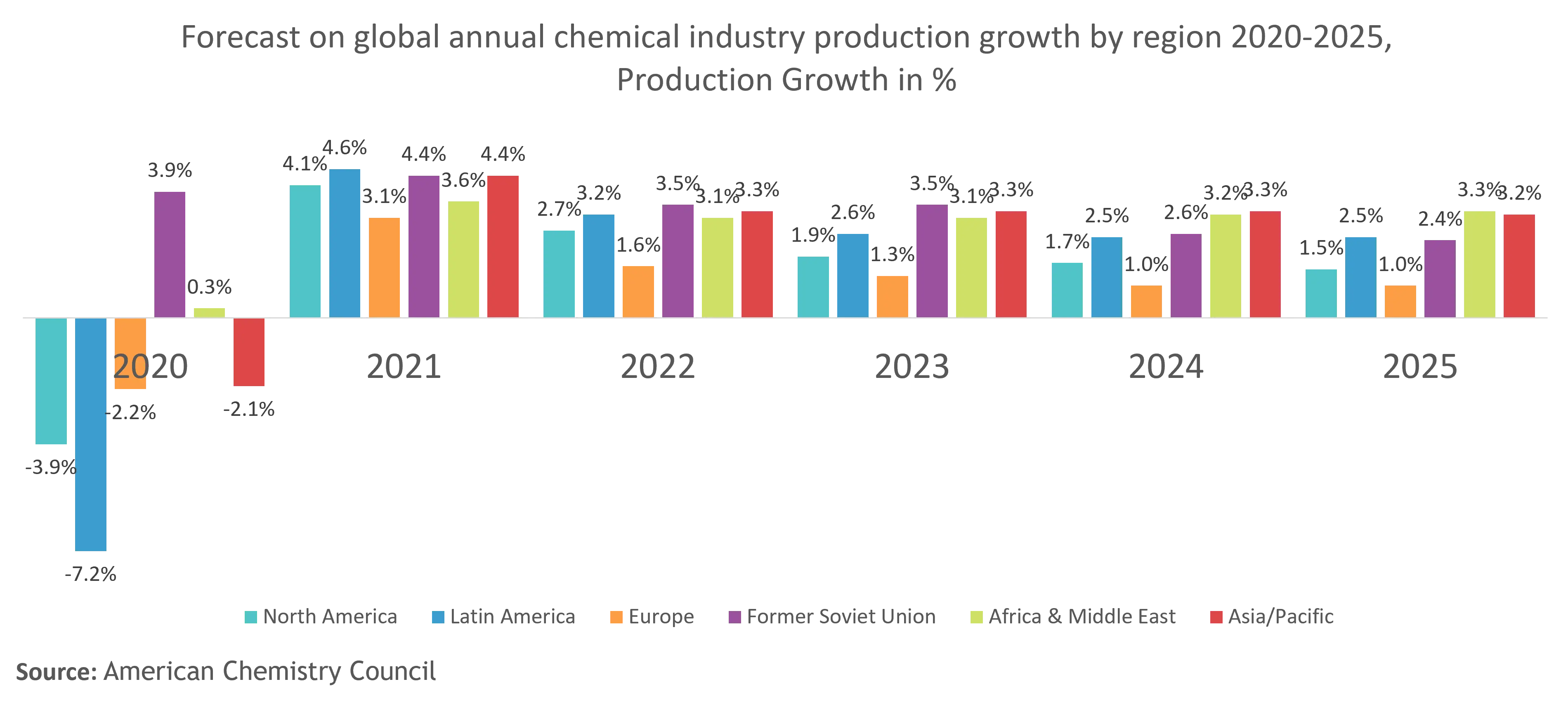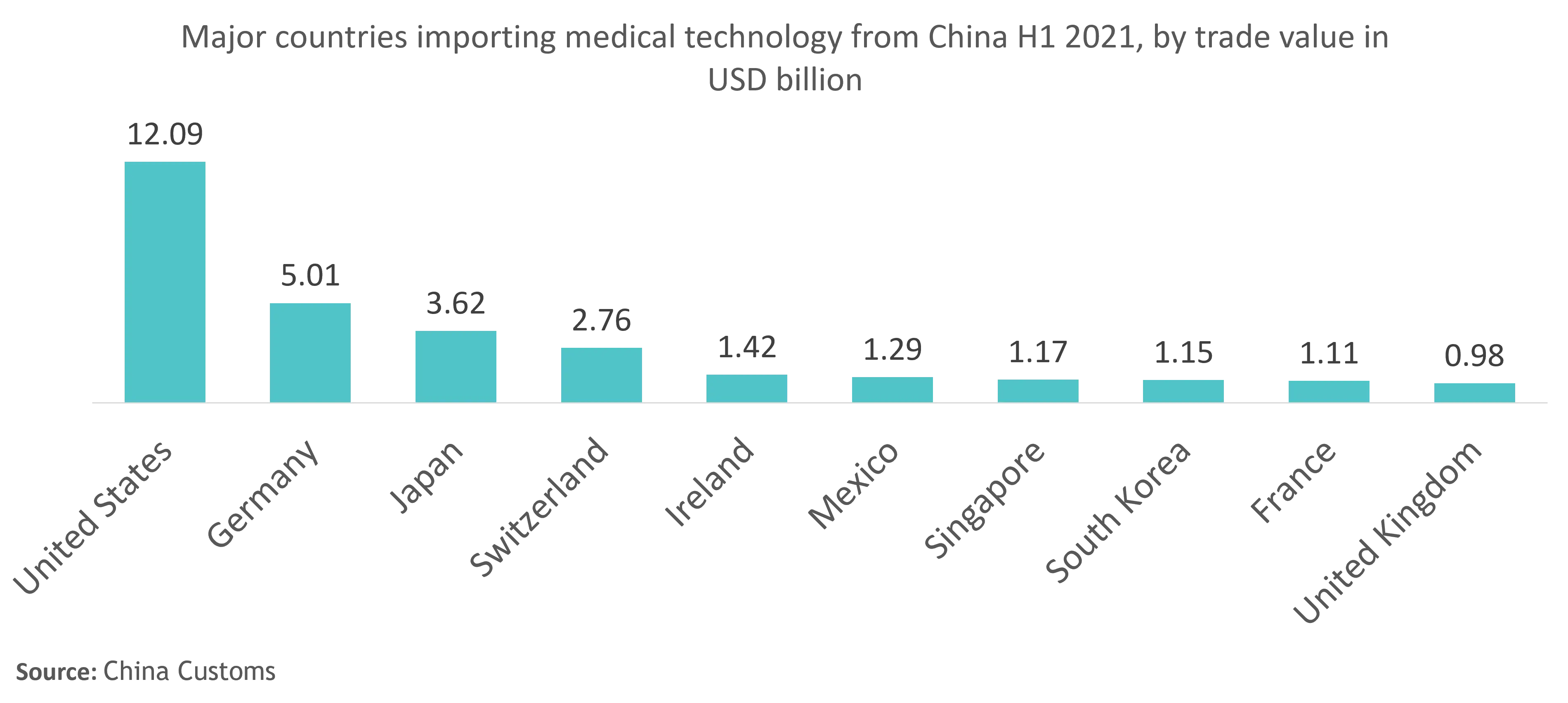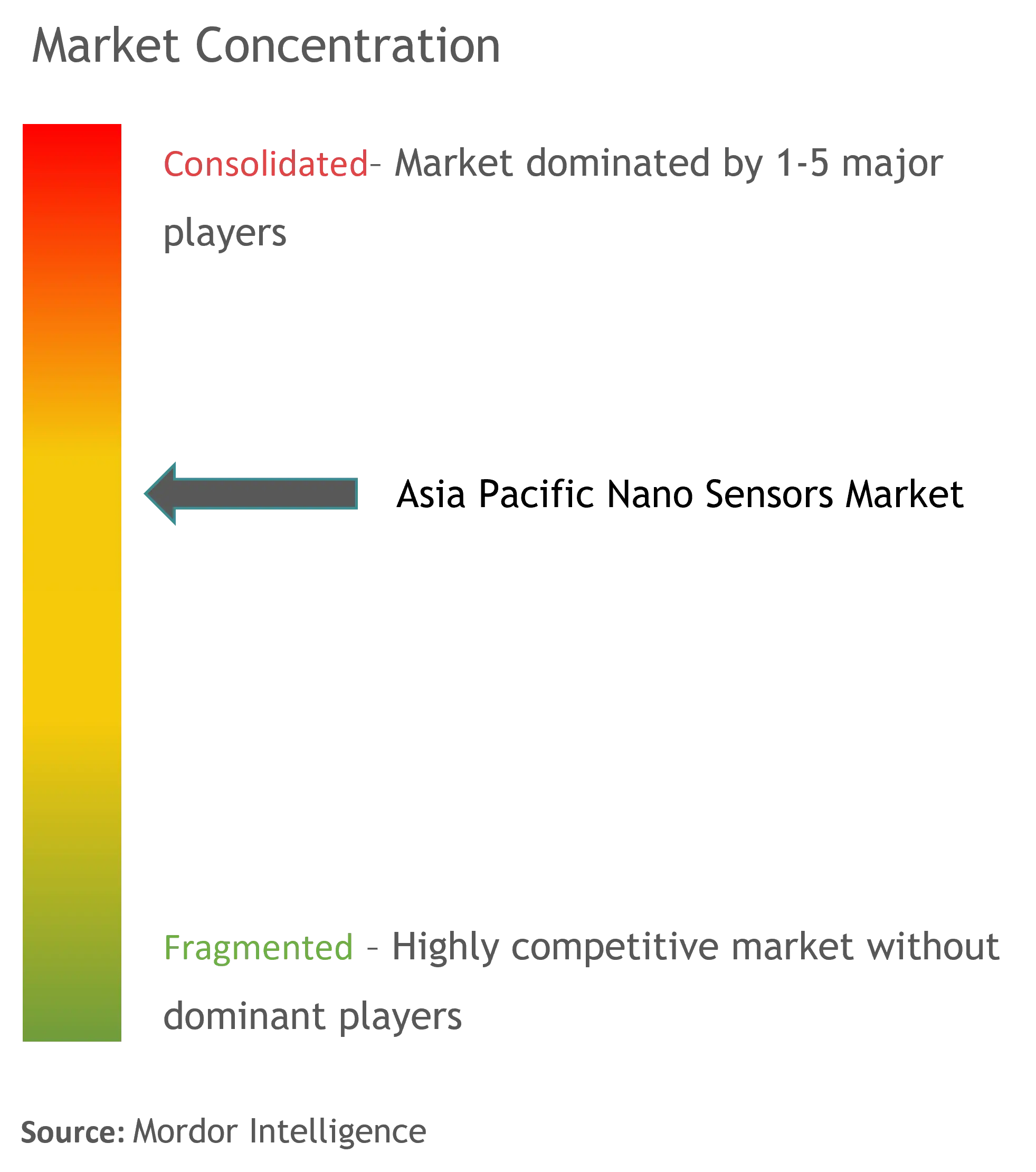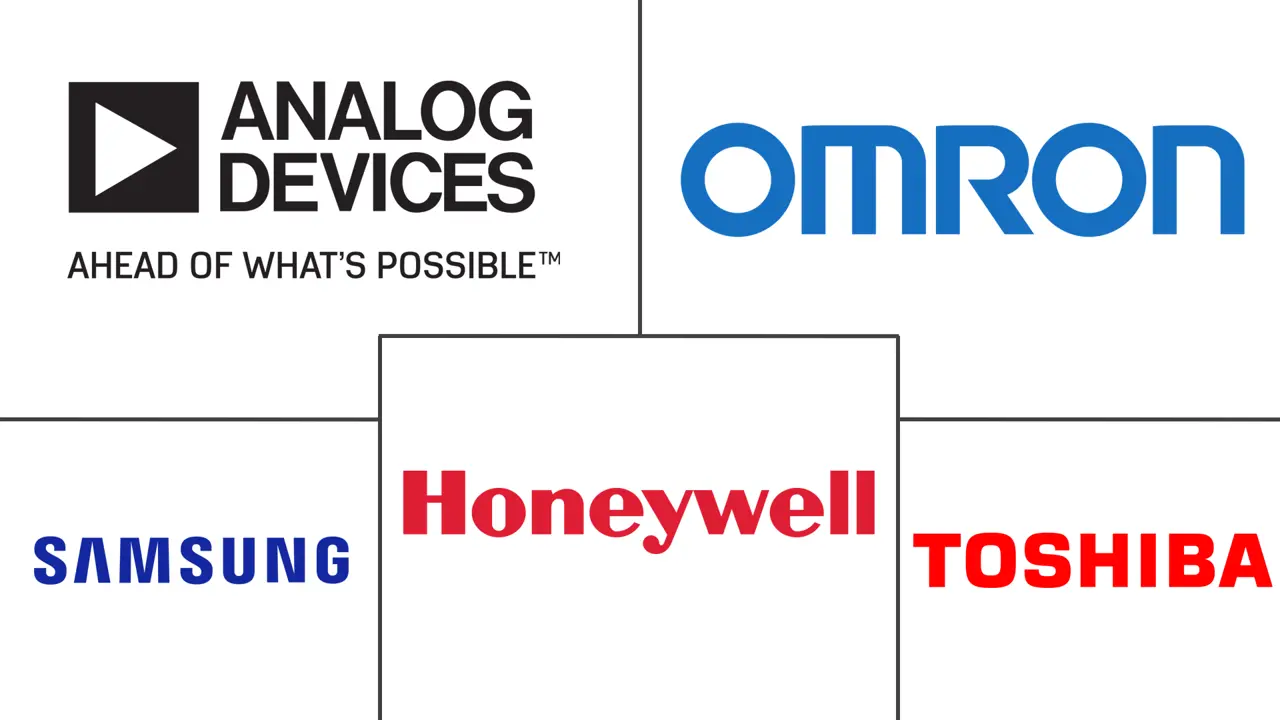
APAC Nano Sensors Market Analysis by Mordor Intelligence
The APAC Nano Sensors Market is expected to register a CAGR of 67.58% during the forecast period.
- The Asia-Pacific nanosensor market is estimated to grow significantly during the forecast period. The region also accounts for a significant market share in the global market. Also, the adoption of nanosensors is expected to be highest in Asia-Pacific during the forecast period.
- The APAC region leads in the development of nanosensor technology. South Korea has the second-highest patents in the nanotechnology market in the world, followed by Japan, China, and Taiwan. The increasing number of patents in Nanotechnology is estimated to grow the market for nanosensors in the region.
- China has become both the world's largest car market and the world's largest production site for cars, including electric cars. Also, there are 27 automotive manufacturing and assembly plants in Malaysia. The automotive industry is also expected to grow significantly in the region.
- The growing economic condition and investments in the region have motivated many nanosensor vendors to innovate in the market. The researchers from China and Singapore have developed a new Optomechanical Nanosensor, which offers fresh possibilities for signal processing.
APAC Nano Sensors Market Trends and Insights
The electrochemical segment is expected to command prominent share over the forecasted period
- Chemical nanosensors measure the concentration and composition of a particular chemical and provide the desired effect. Carbon nanotubes are used in such sensors to absorb or adsorb, depending on the technique used, to detect the chemical changes.
- The measuring attributes include chemical composition and bonding and molecular-level concentration, among others. The benefits of these sensors include high sensitivity, high selectivity, high adsorption, and larger surface area coverage. Growing demand for point-of-care devices is expected to act as a driver for the chemical sensors, as these devices offer an attractive option in this field due to their small footprint and potential for high sensitivity. Oil and gas and petrochemical industries are highly dependent on such devices to ensure a safe environment for the conduction of operations.
- In the food industry, chemical nanosensors have versatile applications with an array of electrode types being used to detect compounds, like Sulfite in sugar, grapes, wine, and water. Thus, the demand for these sensors is expected to increase as various industries, such as chemicals, release pollutants and chemicals as waste, which further increases the need for monitoring solutions.

Growing spending in healthcare is expected to augment the demand for nano sensors
- The biomedical and biomedical sector is the largest initial market for nanosensors in the Asia Pacific region, owing to a growing requirement for rapid, accurate, compact, and portable diagnostic sensing systems. Nanosensors have the capabilities to address this requirement.
- Moreover, nanosensors and nano-enabled integrated systems are expected to be used in large populations in the near future for preliminary diagnosis or screening. The increasing spending on healthcare treatments is also aiding the market in growing significantly.
- In addition to this, the growing healthcare travel towards the Asia Pacific from regions such as North America and Europe is further fueling demand for innovative healthcare solutions. The price parity of healthcare is augmenting the growth of healthcare tourism; for instance, according to the Malaysia Healthcare Travel Council, a coronary artery bypass graft which would cost about USD 92,000 in the United States costs less than USD 10,000 in India.
- Various material development and technology research are underway in the region, which is expected to propel the market demand. For instance, in June 2021, a research team from the Shanghai Advanced Research Institute of the Chinese Academy of Sciences reported a novel flexible piezoresistive sensor with graphene-PDMS (polydimethylsiloxane) microspheres for microstructure perception.

Competitive Landscape
The nanosensors market in the region has few major players who command significant shares; however, various other players in the market are developing solutions based on nanotechnology. The market is not consolidated but moving towards consolidation beyond the forecasted period.
- Aug 2021 - Omron launches the "VTS10 Series PCB Inspection System", the industry's first imaging and artificial intelligence technology that automates the electronic substrate inspection process, eliminating the need for specialized skills to meet the needs of fifth-generation mobile communications, electric vehicles, and autonomous driving. The company's new proposal aims to maintain and improve quality and safety.
APAC Nano Sensors Industry Leaders
-
Analog Devices Inc
-
OMRON Corporation
-
Samsung Electronics co Limited
-
Toshiba Corp.
-
Honeywell International Inc
- *Disclaimer: Major Players sorted in no particular order

Recent Industry Developments
- Sept 2021 - Omron provides on-site DX acceleration simulation software that includes control hardware from a partner company. Sysmac Studio 3D Simulation software is going to be available worldwide and can digitally recreate the entire facility using the integrated robot controller. The software allows customers to simulate the machine, including their own robots and partners' equipment.
APAC Nano Sensors Market Report Scope
The miniaturization of semiconductors and sensors has fueled nanotechnology and nanomaterial applications for sensor manufacturing, giving rise to nanosensors. The scope of the study for the nanosensors market is limited to the products offered by vendors based on technology principles and their respective applications in a wide range of end-user industries globally.
| Optical Sensor |
| Electrochemical Sensor |
| Electromechanical Sensor |
| Consumer Electronics |
| Power Generation |
| Automotive |
| Petrochemical |
| Aerospace and Defense |
| Healthcare |
| Industrial |
| Other End-User Industries |
| By Type | Optical Sensor |
| Electrochemical Sensor | |
| Electromechanical Sensor | |
| By End-User Industry | Consumer Electronics |
| Power Generation | |
| Automotive | |
| Petrochemical | |
| Aerospace and Defense | |
| Healthcare | |
| Industrial | |
| Other End-User Industries |
Key Questions Answered in the Report
What is the current APAC Nano Sensors Market size?
The APAC Nano Sensors Market is projected to register a CAGR of 67.58% during the forecast period (2025-2030)
Who are the key players in APAC Nano Sensors Market?
Analog Devices Inc, OMRON Corporation, Samsung Electronics co Limited, Toshiba Corp. and Honeywell International Inc are the major companies operating in the APAC Nano Sensors Market.
What years does this APAC Nano Sensors Market cover?
The report covers the APAC Nano Sensors Market historical market size for years: 2019, 2020, 2021, 2022, 2023 and 2024. The report also forecasts the APAC Nano Sensors Market size for years: 2025, 2026, 2027, 2028, 2029 and 2030.
Page last updated on:
APAC Nano Sensors Market Report
Statistics for the 2025 APAC Nano Sensors market share, size and revenue growth rate, created by Mordor Intelligence™ Industry Reports. APAC Nano Sensors analysis includes a market forecast outlook for 2025 to 2030 and historical overview. Get a sample of this industry analysis as a free report PDF download.



